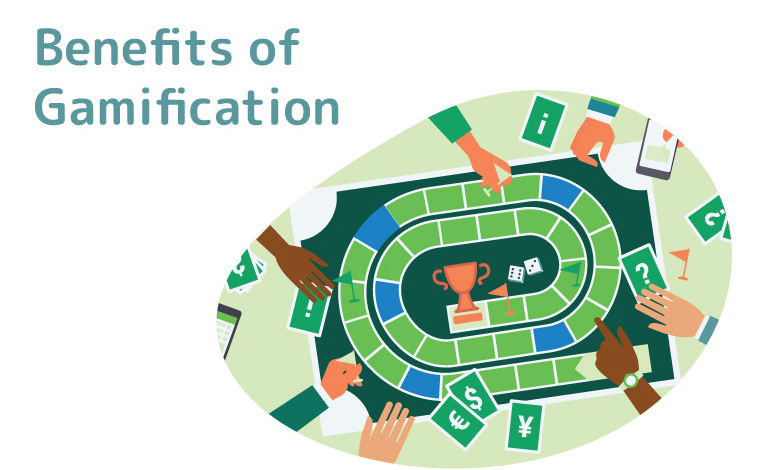Gamification in Education: An Overview

Gamification is the integration of game elements into non-game contexts. In recent years, gamification has become an increasingly popular strategy in the field of education. This article will explore the concept of gamification and its benefits in education. We will also discuss the challenges of implementing gamification in education and provide tips for successful implementation.
What is Gamification in Education?
Gamification involves the use of game elements such as points, badges, leaderboards, and challenges in non-game contexts to motivate and engage learners. In education, gamification is the use of game mechanics to enhance the learning experience. Gamification is not about turning learning into a game, but rather about enhancing the learning experience by making it more interactive and engaging.
Benefits of Gamification in Education
Increased Motivation and Engagement
Gamification can increase motivation and engagement in the learning process. Learners are naturally drawn to games because they provide a sense of accomplishment and immediate feedback. By incorporating game elements into the learning process, educators can create a more engaging and rewarding experience for learners.
Improved Learning Outcomes
Gamification has been shown to improve learning outcomes. By making learning more interactive and engaging, learners are more likely to retain information and apply it in real-life situations. Gamification can also help learners develop problem-solving skills and critical thinking skills.
Personalized Learning
Gamification can also provide learners with personalized learning experiences. Through the use of adaptive learning technology, educators can create customized learning paths for each individual learner. This approach can help learners learn at their own pace and level, which can increase motivation and engagement.
Collaboration and Competition
Gamification can also promote collaboration and healthy competition among learners. By incorporating social elements such as leaderboards and group challenges, learners can work together to achieve common goals. This approach can help learners develop teamwork and communication skills.
Challenges of Gamification in Education
While gamification has many benefits in education, there are also some challenges to implementing it successfully. Here are some of the main challenges:
Resistance to Change
Resistance to change is a common challenge when implementing gamification in education. Some educators may be resistant to using game elements in the classroom, believing that it detracts from the serious nature of education. Educators may also be concerned that gamification may be seen as a gimmick rather than a serious learning tool.
Integration with Curriculum
Another challenge is integrating gamification with the curriculum. Educators need to ensure that game elements are aligned with learning objectives and are not just added for the sake of entertainment. This requires careful planning and design to ensure that the game elements are integrated seamlessly with the learning experience.
Technology Requirements
Gamification often requires the use of technology, which can be a challenge for some educators and learners. Ensuring that all learners have access to the necessary technology can be a logistical challenge.
Tips for Successful Implementation of Gamification in Education
Here are some tips for successfully implementing gamification in education:
Start Small
Start by incorporating simple game elements such as badges or points into the learning experience. As educators become more comfortable with gamification, they can gradually incorporate more complex game elements.
Align with Learning Objectives
Ensure that the game elements are aligned with learning objectives and are not just added for the sake of entertainment.
Involve Learners
Involve learners in the design process by soliciting feedback and suggestions. This can help create a sense of ownership and engagement among learners.
Use Data to Measure Success
Use data to measure the success of the gamification strategy. This can help educators identify areas that need improvement and make data-driven decisions.
The Benefits of Gamification in Education
Gamification in education has been shown to offer a variety of benefits, including:
Increased Motivation and Engagement
One of the main benefits of gamification in education is increased motivation and engagement among learners. By incorporating game elements such as points, badges, and leaderboards, educators can create a more interactive and engaging learning experience that encourages learners to participate and stay engaged.
Improved Learning Outcomes
Another benefit of gamification in education is improved learning outcomes. When learners are more motivated and engaged, they are more likely to retain information and perform better on assessments. Additionally, gamification can help learners develop a growth mindset and a willingness to persevere in the face of challenges.
Personalized Learning Experiences
Gamification can also provide personalized learning experiences that cater to individual learners’ needs and interests. By offering learners a choice of game elements and allowing them to progress at their own pace, educators can create a more flexible and adaptable learning environment that meets the diverse needs of all learners.
Collaboration and Competition
Finally, gamification can promote collaboration and competition among learners. By incorporating group challenges and team-based games, educators can encourage learners to work together and develop important social and teamwork skills. Additionally, leaderboards and other competitive elements can motivate learners to strive for excellence and improve their performance.
Implementing Gamification in Education
While the benefits of gamification in education are clear, implementing it successfully requires careful planning and design. Here are some tips for educators looking to incorporate gamification into their teaching:
Start Small
It’s important to start small when introducing gamification into the classroom. Rather than overhauling the entire curriculum, educators should focus on incorporating one or two game elements at a time and evaluating their impact on learner engagement and performance.
Align Game Elements with Learning Objectives
To be effective, game elements must be aligned with learning objectives. Educators should carefully consider which game elements are most relevant to the learning goals they want to achieve and how they can be integrated into the curriculum.
Involve Learners in the Design Process
Involving learners in the design process can help ensure that game elements are tailored to their needs and interests. Educators can solicit feedback from learners and collaborate with them to design games and challenges that are engaging and relevant to their learning goals.
Use Data to Measure Success
To evaluate the effectiveness of gamification, educators should use data to measure learner engagement, performance, and satisfaction. By tracking progress and analyzing the impact of game elements on learning outcomes, educators can identify areas for improvement and make adjustments to their approach.
Challenges of Implementing Gamification in Education
While gamification in education has many benefits, there are also challenges to implementing it successfully. Here are some common challenges that educators may face:
Resistance to Change
Some learners may be resistant to the idea of incorporating game elements into their learning experience. To overcome this challenge, educators can emphasize the benefits of gamification and engage learners in the design process to ensure that game elements are relevant and engaging.
Integration with Curriculum
Another challenge is integrating game elements seamlessly with the curriculum. Educators must ensure that game elements are aligned with learning objectives and do not distract from the core content of the course.
Technology Requirements
Gamification often requires the use of technology, which can be a challenge for some educators and learners who may not have access to the necessary equipment or software. To address this challenge, educators can explore low-tech alternatives or provide access to technology resources for all learners.
By addressing these challenges and following best practices for gamification design and implementation, educators can create a more engaging and effective learning experience that benefits all learners.



